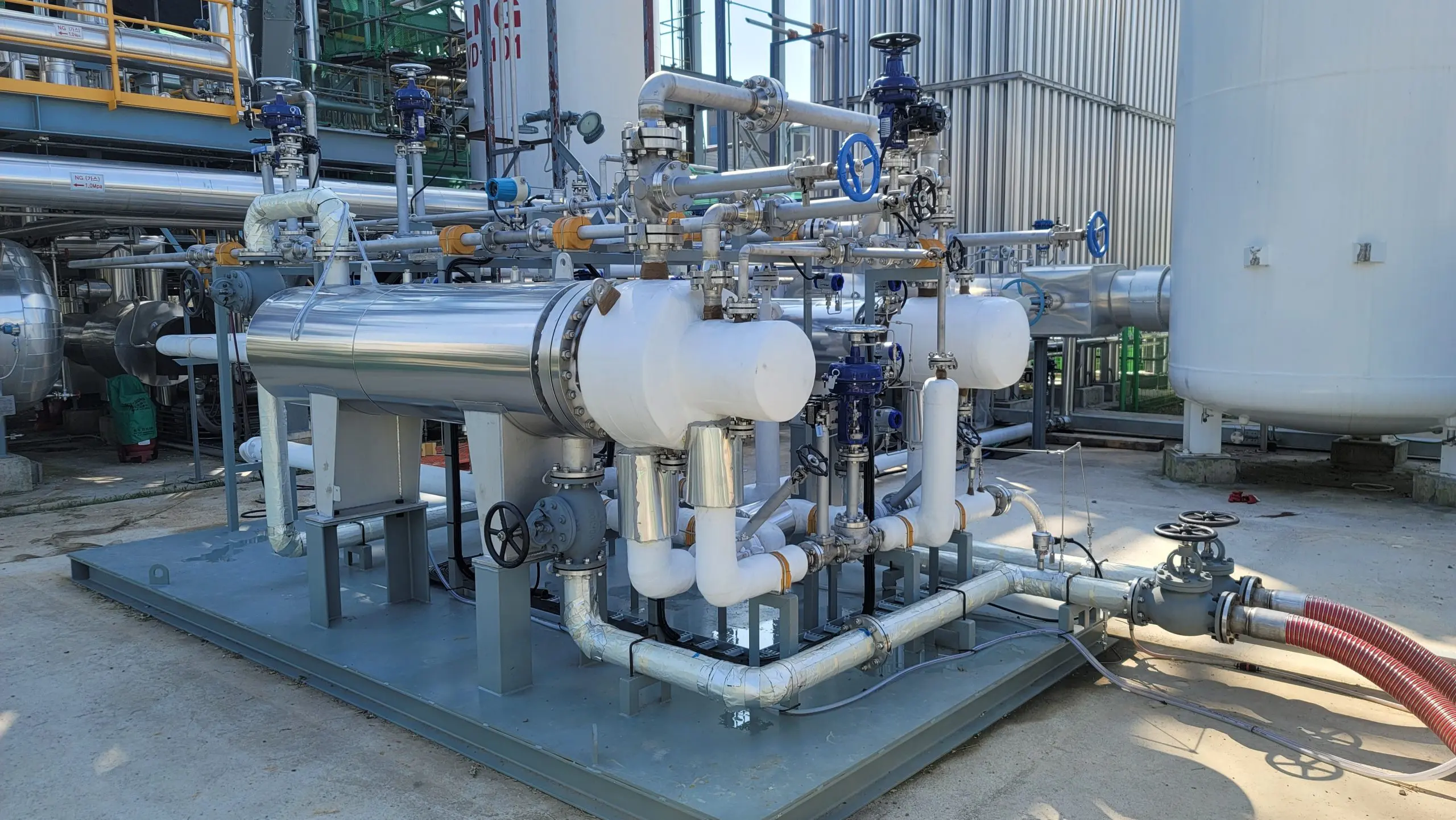South Korea’s KSOE and its unit Hyundai Heavy have developed a new waste heat-derived liquefied natural gas (LNG) fuel supply system named Hi-eGAS.
Classification society DNV said in a statement it had granted an approval in principle for the system for a 300,000-dwt VLCC.
Currently, LNG fuel propulsion ships have used boilers to make hot steam, which has converted LNG into a gas at room temperature to supply a ship’s engine.
However, this process has the disadvantage of increasing fuel costs and carbon emissions, the statement said.
The concept of the waste heat of engine cooling water as a heat source for LNG-fueled ships has been trialed previously, but commercialization was not successful due to concerns that engine performance could be negatively affected, it said.
Hi-eGAS consists of a safety system in which the engine will continue running normally in the event of an incident to the LNG fuel system, such as forcing vaporizer leakage or failure of the JCW booster pump, temp and pressure control valves.
The system utilizes a new heat exchanger with low freezing risk, which KSOE and HHI developed in cooperation with domestic equipment companies.
KSOE successfully completed a 24-hour demonstration test last year at the LNG test center at the Korea Institute of Machinery and Materials under the same conditions as the maximum fuel supply for large ships, the statement said.
DNV recently said that orders for LNG-powered ships hit a new record high in the second quarter of this year.
In total, 805 LNG-fueled vessels are on order or in operation, with a further 229 LNG-ready vessels, according to DNV’s Alternative Fuels Insight (AFI) platform.

